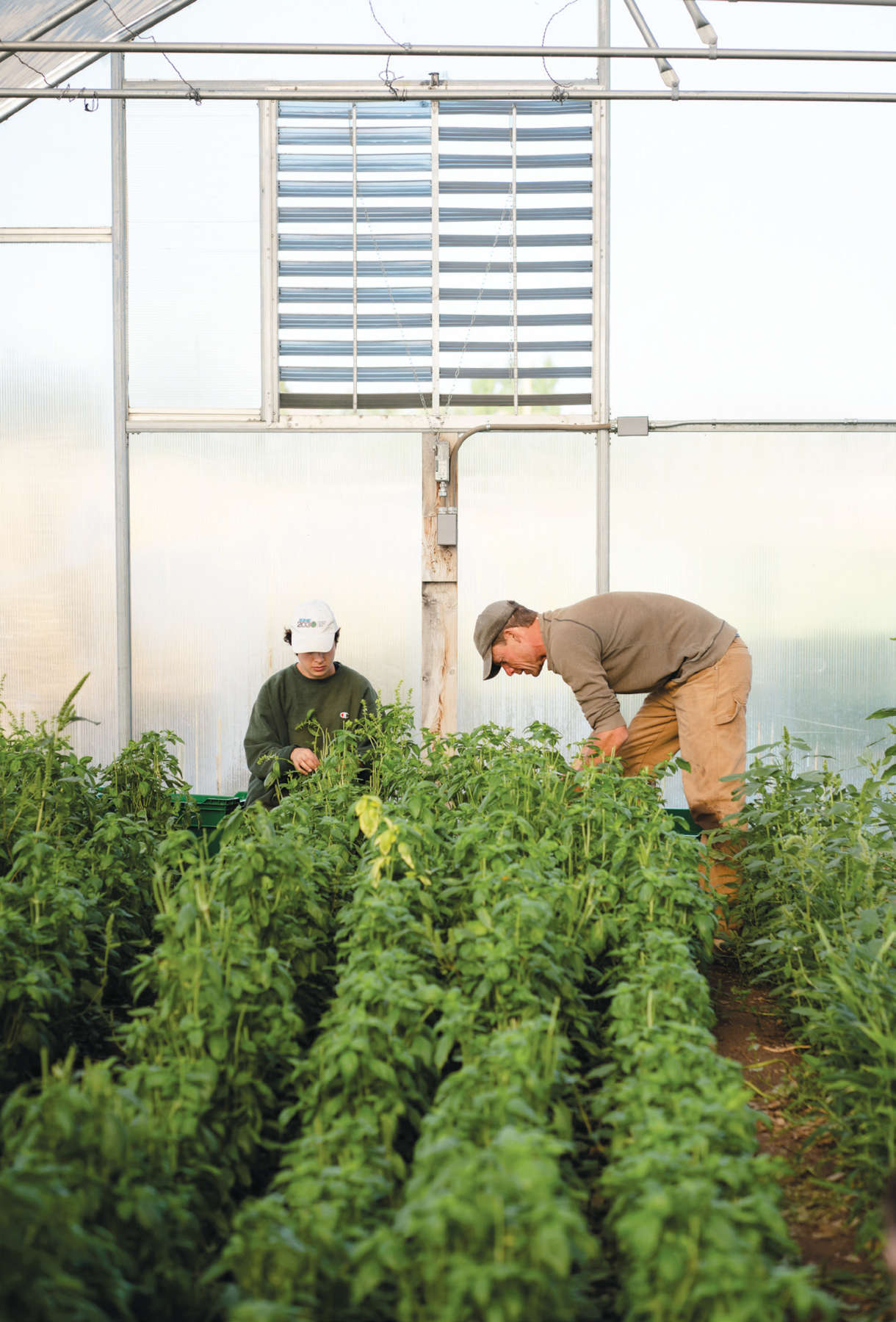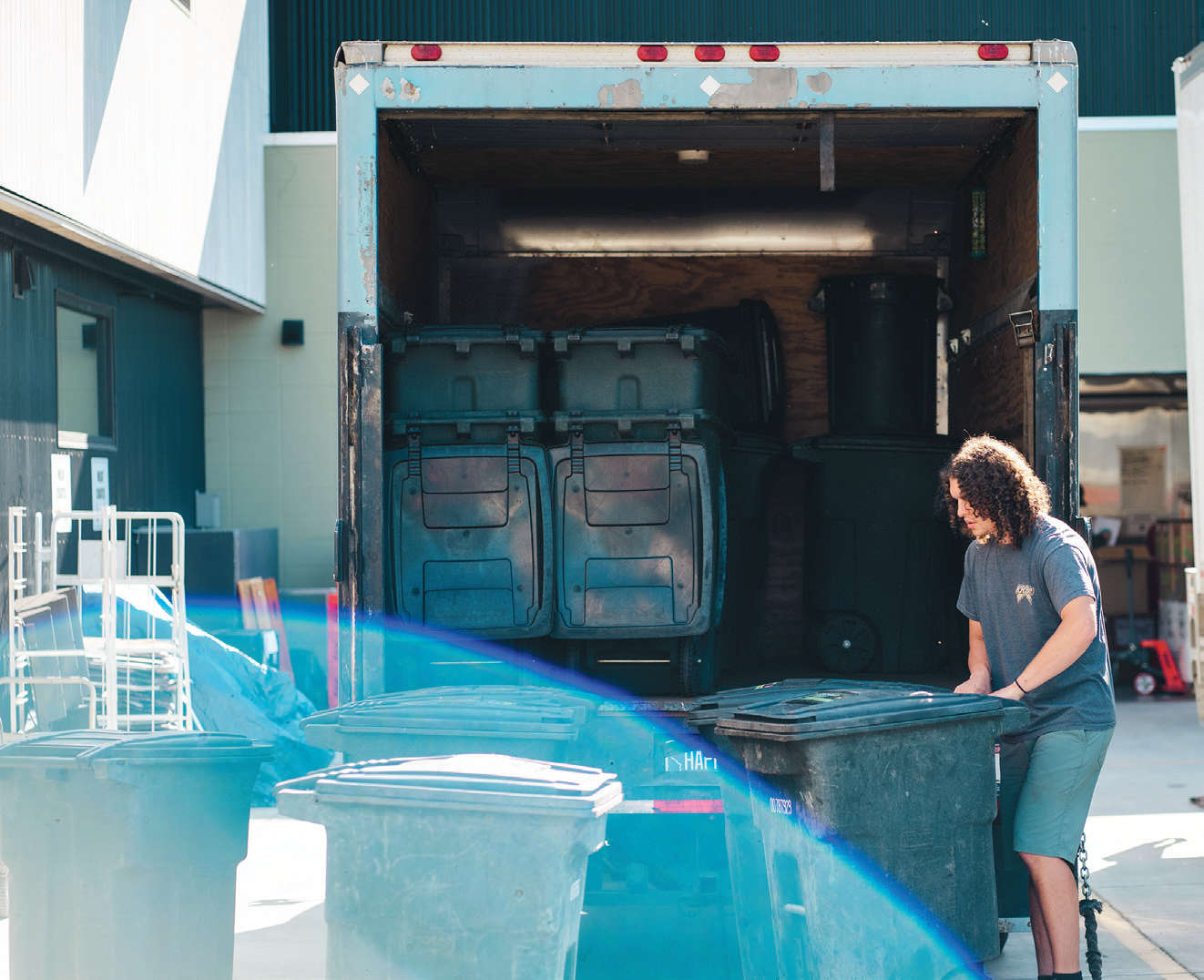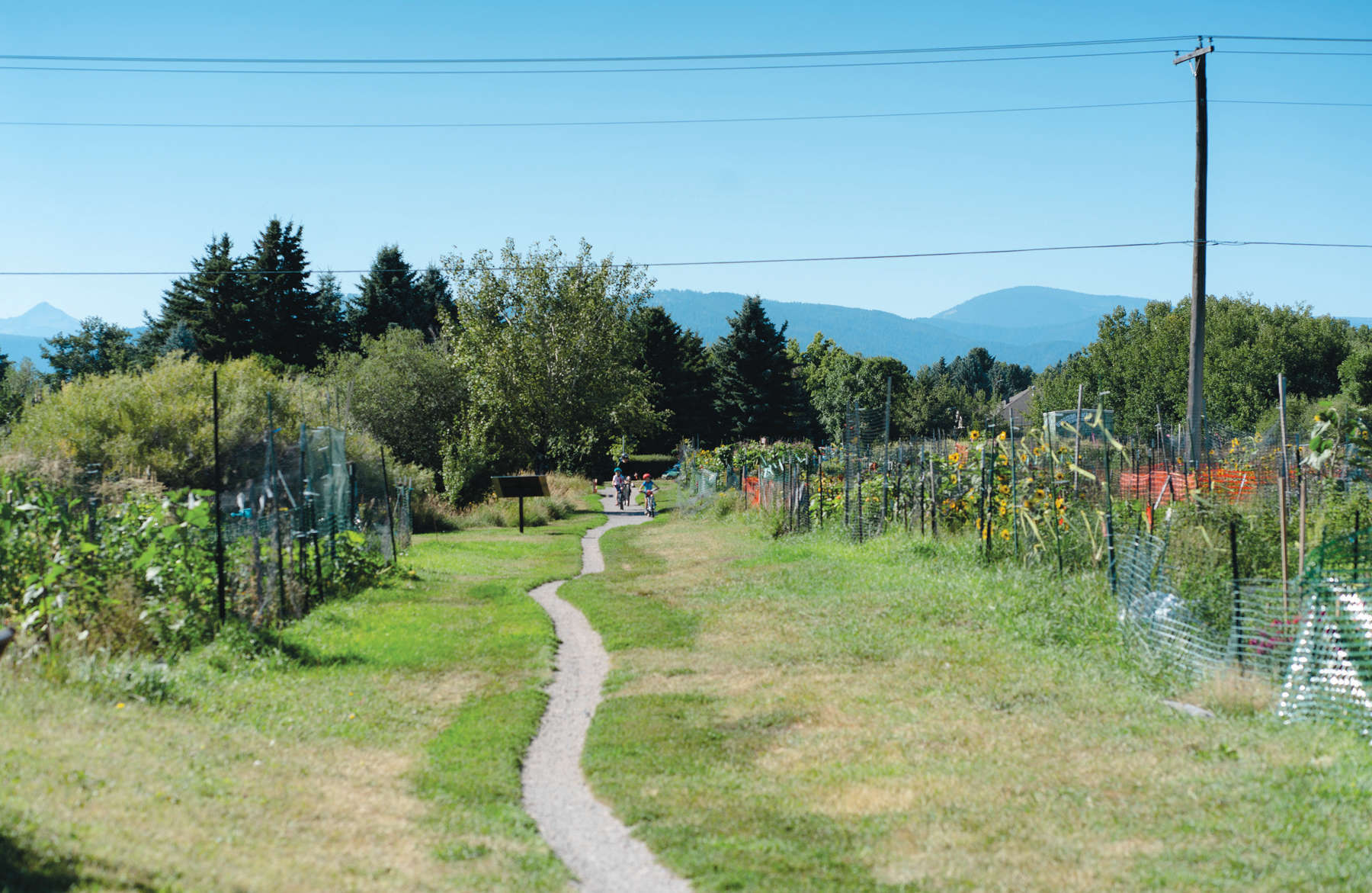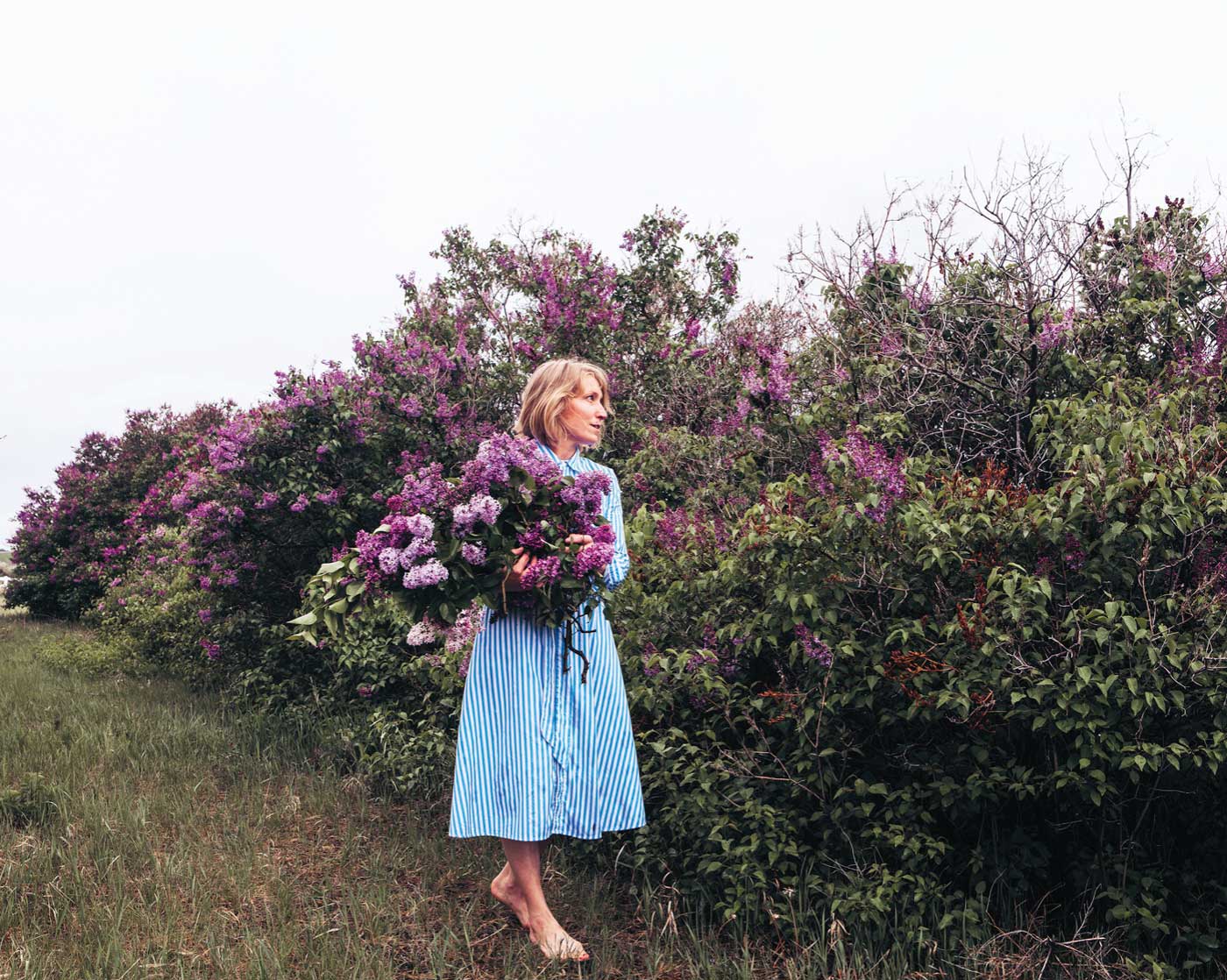Bozeman City Sustainability Specialist Ali Chipouras, Maclaren Latta, and Kate Burnaby Wright (from left) are among a team who is helping the City government better understand its role in the local food system.
Following months of meetings and interviews, a project team for the City of Bozeman’s Sustainability division arrived at a series of recommendations for how the local government could help support the community’s agriculture sector. This effort, dubbed the Local Food System Preliminary Mapping Project, launched in July 2023 and culminated with a report made available in May. Now, the City is considering how it might implement suggestions made in the report, with a public meeting to be held this fall.
The mapping project team developed recommendations following a nearly year-long review process in which they interviewed approximately 80 residents and business owners about topics such as food access, resilience, community wellness, education and culture, production, food systems, and ecological sustainability.
Interview participants encouraged the City of Bozeman to step up in its role as a community leader by championing local food policies and leveraging resources. They also acknowledged that farmers are increasingly struggling to acquire or access farmland and sustain existing farms, in part, due to rapid development and a rising cost of living in the valley.
As one way to improve this situation, interviewees expressed interest in identifying land that would be appropriate for local food production. Additionally, the report underscores the value of collaborative approaches, stating that resilient local food systems involve a range of entities, and support for social and physical infrastructure at all levels of the food system is critical.


The Local Food System Preliminary Mapping Project began in 2023 following the City of Bozeman’s publication of its 2020 Climate Plan, which outlined steps the City could take to reduce greenhouse gas emissions while creating a more equitable, resilient, and sustainable community. Among the steps identified in the Climate Plan was the directive to “cultivate a robust local food system.”
To better understand the local government’s role in the area’s food landscape, the City of Bozeman awarded a $28,290 contract—funded through the City’s Commission-approved budget—to Kate Burnaby Wright and Maclaren Latta of Latta Consultants and tasked them with interviewing constituents, reviewing current City policies and plans, writing a report, and holding public presentations to review the proposed recommendations. The project team also included representatives from the City, including Sustainability Specialist Ali Chipouras and Program Manager Natalie Meyer.
Josh Chance of Chance Farm says that during his interview, questions focused on what solutions might lead to producers having access to the necessary resources that would allow them to continue farming and ranching in the Gallatin Valley. During his group interview, Chance stressed the importance of considering water rights and land access in an area with an exploding rate of population growth.
“I’m running my farm on a well,” he says. “I assume in the future there’s going to be water restrictions because of the rising population. Also, I hope they think about ways to prevent developing every little bit of space that could potentially be good agriculture land.”
Chance’s concerns are highlighted by research conducted by Headwaters Economics that shows that since 1990, Gallatin County has lost more open space than any other county in Montana with 67,520 acres converted to housing since 2000. Of the development since 2000, 27 percent has been single-family homes built on lot sizes over 10 acres.
After facilitating conversations with citizens, the project team synthesized responses and distilled them into a 32-page report and 73-page appendix that provides the City with suggestions for 14 steps the project team believes the City could implement with current resources, as well as 19 longer-term opportunities that would require more planning.
Despite rapid residential and commercial development, the food and agriculture sector is still an impactful economic driver in Gallatin County with 655,883 acres of farmland and 1,009 operating farms, according to the U.S. Department of Agriculture’s 2022 land census.
Some of these steps are guiding principles that could shape and inform the local government’s actions, such as to “strengthen the sense of place and the connection between community members and our natural environment by building a strong connection to our local food system and natural environment.”
Other recommendations are more specific, such as adopting a City of Bozeman local food procurement policy for City-hosted events, strengthening and expanding relationships with members of the area’s Indigenous community, strengthening the City’s community garden program, expanding City planting incentives to include food-bearing species, and providing opportunities for City staff to learn firsthand about the food system through site visits and educational programs.
One idea that is outlined both in the project report and the Climate Plan is the establishment of a local food council. Such a council could work with local government to implement next steps, advise on local food-related policy issues, and identify funding and advocacy opportunities.
The report also suggests that the City work with others in the food system to identify missing elements within the community’s food system
infrastructure and map various programs that are available to help support industry businesses.
In early May, the City held several meetings to present project findings to the project steering committee, interviewees, a broader public audience, and the Bozeman City Commission. While there were many insights shared during these sessions, one idea that community members kept returning to is the establishment of a permanent farm stand.
The Local Food System report touches on this idea, suggesting that the City “collaborate with partners on community infrastructure projects that enhance the local food system such as a permanent farmers market location, community kitchen space, etc.” While a year-round farm stand is an idea that has long been discussed as a way to create a more stable income stream for producers in the area, lack of funding and affordable shop space have stood as barriers.

Food Lens is a group that feels passionate about the establishment of a permanent farm stand, and the advocacy group recognized the opportunity for greater public engagement by launching a website and social media soon after the City released its draft report. Members of the group hope to filter future decisions in Gallatin County through the facet of food security. The foundational components of this group were organized years ago when Becky Weed sat down and wrote a document that outlines what food system success might look like in the Gallatin Valley.
“We wanted to capitalize on the inertia many people are feeling right now,” explains Alyssa Freese, a founding member of Food Lens. “It doesn’t feel like the permanent farm stand is our job, but we keep hearing that it’s a need.”
A key takeaway from the Local Food System project, as stated in the report, is that “participants encouraged the City of Bozeman to step up in its role as a community leader by championing local food policies, leveraging resources, and integrating a commitment to local food systems and community food security into City initiatives and community planning.”
One farmer noted during their project interview that, “There are superheroes in this valley that have spent their lives trying to make it work, but it’s just not working. There should be a way to be a farmer, a hard worker, and be able to make ends meet.”
From the dialogue, it’s clear people are hopeful that this project is a step toward creating a viable path for farmers. Citizens are now looking at the City of Bozeman with a watchful eye to see which suggestions are implemented and on what time frame. Ryan Green, co-owner of Happy Trash Can
Curbside Composting and a project interviewee says, “[The City of Bozeman] put notable time and resources into the study. I’m really interested to see what the City does with the recommendations that were made.”
One conclusion that most attendees and project participants agree on is that this work is going to take collaboration from public, private, and government entities throughout Gallatin County. As one project participant shared during their interview with Wright and Latta, “We need something akin to a common vision of what we want in our food system. That won’t emerge from one person or one institution, and neither government nor the private sector will succeed alone.”
The City and project partners are planning for a follow-up meeting this fall to share updates and discuss next steps. According to Chipouras, the City will post project updates on the City’s Sustainability webpage, bozeman.net/sustainability (the full report is also available at this site). For more information or to contact the project team, email sustainability@bozeman.net.




